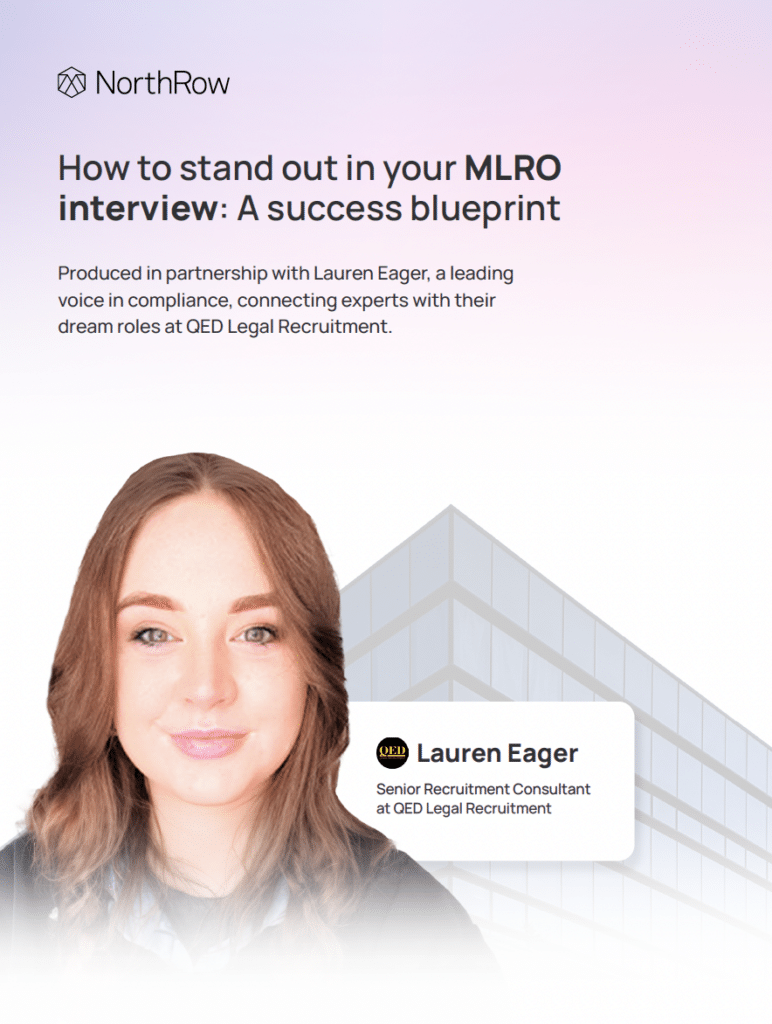At a time when AML regulations are evolving on a near weekly basis, the importance of ensuring complete compliance with this legislation remains paramount for regulated firms in the UK.
While manual compliance processes have been the norm for many years, they are increasingly proving to be inadequate in the face of the growing complexity of financial crime, and the regulations that govern it.
Teams in regulated businesses face numerous challenges in ensuring compliance, from manual screening processes and managing vast amounts of customer data to staying ahead of evolving threats.
Fortunately, technology offers a full suite of innovative solutions to address these challenges and enhance AML processes effectively. In this article, we take a look at five of the most pressing challenges facing AML compliance teams today, and share proactive solutions to overcome these, while ensuring comprehensive compliance AML processes.
Challenge 1: Manual customer due diligence (CDD)
Compliance teams often face significant challenges when conducting due diligence on their customers, often leading to increased risk exposure. Manual processes in any department can cause serious bottlenecks, but especially so in compliance. Not only are they time-consuming, resource-intensive and prone to human error, but can lead to talented compliance teams struggling to keep up with the sheer volume of checks, verifications, and cases they need to review. As a result, this makes it difficult to identify any suspicious activity, fraudulent applications, or red flags in a timely manner.
When conducting customer due diligence checks manually, these processes are often labour-intensive and reliant on outdated methods for identity verification and screening against sanctions lists and politically exposed persons (PEPs) databases.
How can technology help?
Technology offers advanced data collection tools, information aggregation, automated analysis and ongoing monitoring to streamline the entire compliance process. From the point of onboarding, where customer information and identity documents are required, to initial screening for PEPs, sanctions, or adverse media, and throughout the customer lifecycle; technology can ensure that any potential financial crime or adverse risk activities are flagged, enabling compliance teams to focus their efforts on high-risk cases where their expertise is most needed.
What’s more, tech-enabled KYC and KYB solutions provide biometric authentication, document recognition, and other advanced technologies to streamline the customer due diligence process.
These solutions can automate identity verification, screen against global watchlists and databases, and assess the overall risk of customers in line with your firm’s appetite for risk. Automating these processes means that compliance teams are more efficient with fewer manual errors and always compliant with the latest regulations.
Challenge 2: A lack of real-time monitoring and risk alerts
Traditional AML compliance processes often rely on periodic reviews at defined intervals and manual reporting, making it difficult to detect suspicious activity in real-time and increasing the risk of regulatory non-compliance and financial penalties.
Outdated, manual compliance processes tend to be reactive rather than proactive, with compliance teams relying on manual reviews to identify any suspicious activity. Such a reactive approach often results in delays in detecting and mitigating emerging threats, allowing illicit activities to go undetected for long periods before being identified and addressed.
What’s more, manual monitoring can’t keep pace with the speed and volume of clients most businesses have on their books. This often results in missed opportunities to detect any changes in risk profiles, customer behaviour, or suspicious activity.
How can technology help?
Technology automates the time-intensive task of monitoring clients for any changes in risk profiles in real-time, as they occur. These systems analyse global data registries, databases, watchlists and newswires for any high-risk activity that may fall outside of your firm’s tolerance and generate timely alerts for further investigation.
Compliance teams can define customer thresholds and rules to trigger alerts based on specific criteria (such as becoming a PEP or being named on the UK sanctions list), allowing them to respond swiftly to suspicious activity and mitigate any associated risks effectively, before they become problematic.
Challenge 3: Increasingly complex regulatory requirements and compliance obligations
AML compliance is subject to complex requirements and obligations in order to be compliant, including the need to keep up-to-date with changing regulations and guidelines surrounding money laundering and financial crime.
Even the most seasoned of compliance professionals face challenges in interpreting and implementing regulatory changes. What’s more, ensuring compliance processes are updated in line with the evolution of regulatory requirements is another challenge unto itself.
How can technology help?
Today’s modern compliance software delivers tools that help compliance managers to stay abreast of regulatory changes and ensure compliance with the very latest developments.
The technology provides automated updates in line with regulatory developments, changes in guidance, and reporting requirements as they happen, tracking and monitoring changes in AML regulations and guidance issued by regulatory authorities, enabling compliance teams to ensure their processes are adapted accordingly.
Challenge 4: Fragmented data sources and siloed systems
Disparate data sources and siloed systems can also present a significant challenge for compliance teams. By their very nature, regulated businesses collect vast amounts of data from various sources during the client onboarding process and throughout a client’s lifecycle from source of wealth information and identity documents to data on corporate structures, sanctions lists and more.
However, this data is often siloed across different departments, systems, and databases, making it challenging for compliance teams to access relevant information that would provide them with a full understanding of each client for AML compliance purposes.
What’s more, a lack of integration between data sources and systems only exacerbates the challenges of disparate data sources and information This often leads to inefficiencies and gaps in compliance processes without a centralised data repository or integrated solution, leaving teams struggling to obtain a comprehensive view of the customer and their risk profile.
How can technology help?
Unified compliance systems consolidate AML compliance processes and data into a single, integrated platform. These systems provide end-to-end solutions that support the customer onboarding process, from sourcing and aggregating data from global databases, watchlists and repositories, to processing and ongoing monitoring.
With one solution for all AML compliance cases, teams can benefit from streamlined processes, automated workflows and centralised management. Having a single solution simplifies the task of data collection and eliminates the need to manage multiple systems and data sources separately. Instead of dealing with disparate tools and platforms, compliance teams can access all relevant data, workflows and functionality within one integrated solution.
Challenge 5: Cross-border clients and global compliance
With the rise of globalised financial markets, more regulated businesses than ever before now engage in cross-border transactions that span multiple jurisdictions. Cross-border compliance poses a unique challenge for regulated businesses, particularly due to the sheer variation of AML regulations across the globe. Each country has its own set of laws and regulations governing anti-money laundering standards, and this can lead to incredible difficulty understanding and interpreting the nuances of legislation, making it hard to ensure compliance with global standards.
Additionally, global transactions often involve higher risks due to the potential for financial crime, terrorism funding and other illicit activities to take place. Enhanced due diligence (EDD) is often required in cases where the level of risk is inherently higher than normal, but, once again, the expectations for this can vary depending on the jurisdiction, type of transaction, and customer profile. As a result, the waters can become somewhat muddied for compliance teams as to what is mandatory in each geography and due diligence processes can become disparate or, in a worst case scenario, non-compliant.







